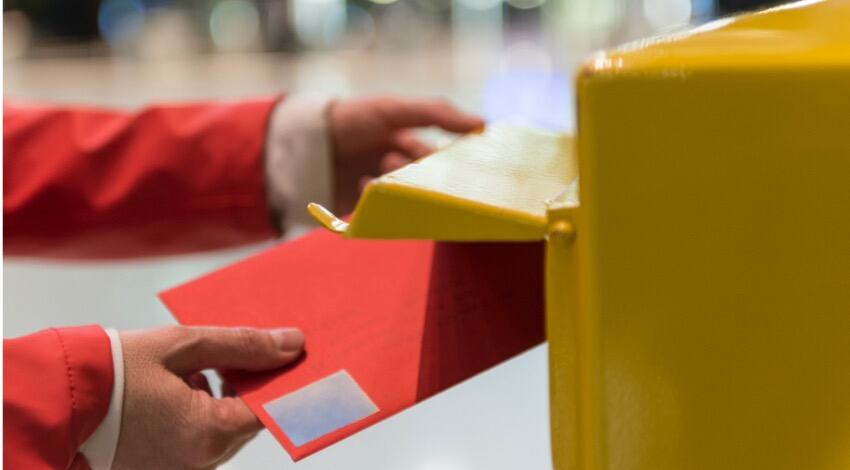Find it Fast: Make a Household Storage Plan

Keeping track of stored stuff is much, much easier with a household storage plan. Know where to store and how to store---and what not to store--with these tips
It's here ... somewhere.
Living in close proximity with our possessions means we can't always find the things we need, when we need them. Disorganized, crowded storage spaces make it hard to decorate for holidays, make up a guest bedroom, or find the right tool for the job.
Squeezed by the storage shuffle, it's tempting to yearn for larger quarters. Let me burst the bubble (as one who knows): a bigger house is not the answer. Stored stuff has an amazing bread-dough quality--it rises to fill the space available, and then makes a sticky mess as it slops over the sides of the container. No matter how many closets, cupboards or square feet of attic space, surplus stuff will find a way to take over while your back is turned.
For most of us, an efficient household storage system seems like an impossible dream. The answer? A household storage plan.
How To Organize Household Storage
Too often, household storage gets assigned willy-nilly, often on move-in day--and months later, it's impossible to find the holiday decorations.
Better step: create a plan that matches stored items with the right space ... and then make an organized move to a more efficient set-up.
Planning efficient household storage space takes three steps.
- Assess
- Box and Banish, and
- Corral and Control.
What's the payoff? Time, money and self-esteem.
With a storage plan, you'll find the kids' summer clothes while it is yet summer. You'll save money by using stored goods, instead of buying new (because you are able to find that box of sprinkler-system parts you bought last year).
There's the snug, smug feeling of being Mistress of Your Domain, Queen of the Stuff. You'll know what you have, where it is, and how to find it--and so will the other members of your household.
"A" is for Assessment
To start building a household storage plan, you have to know two things: what you have, and where you have to put it. To learn this, you'll make an assessment of your household's storage possibilities and your family's storage needs.
Grab the phone, a notebook or writing pad, a pen and an hour of time. Making an assessment simply means making two lists: Storage Spaces and Stuff To Be Stored.
First, assess available storage spaces. alk the house from attic to cellar, and list every potential storage area, large or small. The hard-to-reach top shelves in children's closets. The skinny space beneath the master bed. The attic. The storage shed out in the back yard. Shelving units in the garage.
That the attic is choked, the shed stuffed and you haven't seen the top shelves in years? Ignore that fact. You'll be dealing with the problem further down the road. For now, focus on finding all the nooks, crannies, and cupboards available for household storage.
You've rounded the house, garage and garden and made the list of potential storage areas? Great! You've also refreshed your memory about the nature and extent of the stuff overload living in your home.
Now it's time to sit down at a table to work on Assessment List Two: Stuff to be Stored. Memory refreshed by your peek at existing storage, list the stuff you need to store.
Some storage items are necessary and appropriate for almost every household. Items like these make the storage cut, and have a just and proper place in your storage plan:
- Clothing (out-of-season clothing, children's hand-me-down candidates, maternity clothes)
- Seasonal décor items (Christmas trees and decorations, Easter baskets, Halloween costumes)
- Household file archives (tax records, personal documents, family information and files)
- Sentimental and keepsake items (old yearbooks, children's' schoolwork and report cards, photos)
- Luggage
- Sporting goods (bicycles, skis and snowboards, skates, camping equipment, outdoor game sets)
- Children's storage (outgrown baby equipment, toys, children's keepsakes, boxes held for college-age or young adult children, grandma's toy chest items)
- Sewing, hobby and craft equipment and supplies (sewing machine, fabrics, hobby supplies)
- Party and hospitality supplies (coffee urn, paper goods, extra glasses, punch bowl, seasonal tablecloths, card tables, extra chairs, extra beds and bedding used for houseguests)
- Less-used cleaning equipment and supplies (carpet steam-cleaner, window cleaning poles and squeegees, automotive cleaning supplies)
- Tools and hardware (hand tools, power tools, hardware items, ladder, garden tools, auto repair tools and supplies)
- Original packaging for computer, audio and video components (keep boxes and packaging for newer components, as the manufacturer may condition warranty service on returning the item in original packaging; toss packaging for out-of-warranty items)
Necessary stored items get first claim on a home. Match tools and hardware with the garage shelf and toolbox. Assign seasonal decorations to an each-to-reach area in the attic. Luggage may live under beds or in a guestroom closet.
Using the list of available storage areas, assign each worthwhile item a good home.
You're smiling! There are lots of these items on your list. Good! Now you have the energy to deal with the other half of your "stuff" list: stored clutter that may need to be banished.
Are you giving house room to items like these? Good candidates for banishment include:
- Ugly knick-knacks and frou-frou (figurines, decorative objects, old floral containers and gifts from your mother-in-law)
- Unused small appliances (sandwich squashers, fondue pots, beat-em-up shiatsu massage wands or any small appliance that's been used less than 5 times in 2 years)
- Excess kitchen equipment (novelty cake pans, give-away mugs and water bottles, Jell-O molds in the shape of the USA)
- Non-working anything (burned-out lamps, broken stereo turntables, televisions with no picture, tools without handles)
- Unusable clothing (worn-out children's clothes, two-sizes-too-small women's clothing, men's clothing from the 1990's)
- Construction leftovers and debris (scraps of flooring or carpet, surplus tiles from tile jobs, replaced sinks, plumbing supplies and light fixtures, wallpaper roll ends, empty paint cans)
- Excess furniture (the yard-sale table you're going to refinish someday, broken bed frames, bumpy mattresses, legless sofas)
- Just Plain Junk (anything dead, missing, incomplete, unusable or just taking up space)
In phase two, these items will be Banished. Methods include donation to charity, holding a yard sale, or hauling them all to the dump, but the goal is the same: get them out of your limited storage space to make room for the legitimate stored items.
Look over your list and circle Banishment Candidates with a big red pen. Resolve to move them out, finally and forever. No pity, no mercy. It's your storage space (and sanity!) at stake.
Then, there's the "let's negotiate" category. These are stored items that might appear to be worthy of banishment, but someone in the family has an interest in them. This tricky category includes items like:
- Collections (boxes of LPs, college textbooks, a grown child's childhood possessions)
- Unused heirlooms (Grandmother's souvenir spoons, mismatched china cups, ugly pictures that hung in a parent's home)
- Sentimental overload (boxes of every school paper ever brought home by each child, complete baby wardrobes to age two including stained diapers, a box of mixed and crumbled high school corsages)
- Tool-o-holic indulgences (unused tools, unused or excessive sewing and craft supplies, unfinished sweaters, quilts, or birdhouses)
For "let's negotiate" items, a confab is in order with the interested party. Goal: eliminate, reduce or accept the necessity of storing each class of item.
Can the adult child collect some or all of his things? Will the sew-a-holic agree to purge and sort her stash to a more manageable level? Perhaps one spouse will have to accept the other's devotion to those warped LPs, and find a ground-level storage solution for all those heavy boxes.
However you resolve it, work out ways to turf (or accept) these negotiable items. The goal: a clear storage plan.
Know what you must store and where you will store it. Write it down, and get ready for step B!
B is for Banish and Box
You know what storage space is available. You know which belongings should be stored there. So what? Every closet, shelf and cupboard is groaning with out-of-place stuff. Time to Banish and Box--the working phase of setting up efficient household storage.
Shelf-by-shelf, room-by-room, you're going to rout out your storage areas. Working one area at a time, you'll pull out currently stored stuff, sort it out, banish the rejects, and box everything that belongs elsewhere.
Only then do you put away the designated stored items. Yes, this process takes some time and effort, but there are ways to make the change-over easier.
Here are the best tips for sorting existing storage areas and putting your plan into place:
- Keep your assessment list in view. Know exactly what items are assigned to the top-most shelf in your daughter's closet: boxes containing out-of-season clothing. With your plan in the forefront of your mind (and eyes), you won't be tempted to redistribute extra toys or bed linens to that space.
- Work one shelf at a time. Biggest mistake most of us make? We go into "nest mode" and tear apart way more storage than can be reassembled in a single sorting session. Keep the effort small and sustained, and you'll win the storage battle. Spread your energies too thin and you'll merely muddle the battlefield.
- Box it, Box it, Box it--unless you Banish it. Say you're sorting out the top shelf in a utility room closet. You've decided that party supplies should live there, but right now, the shelf is a jumble of old floral vases, rejected knick-knacks, extra cleaning supplies and board games. Drag the garbage can, a box marked "Donate" or "Yard Sale", and two or three extra boxes to the utility room. Item by item, pick it up and assign it to a box (or execute the sentence of Banishment). Cleaning supplies go in a box destined for the kitchen. Toss the vases into the "yard sale" box. Hubby insists on keeping his Mom's old china shepherdess, so wrap and place her into a box marked "U" for Ugly and Unwanted. Board games go into another box. Repeat until the shelf is empty.
- Shift boxes to their new storage site. After you've cleared your shelf and wiped it down, deliver the contents of each surviving box to the new site according to your assessment list. Board games go to the family room shelves. Tuck the "U" box inside the attic, where you'll add to it when you clear the next shelf. Yard sale boxes live along a garage wall waiting for spring and your yard sale.
- Set a timer and plan your put-away. It's not enough to clear the space! You have to deal with the cleared items, too, so plan for it. You have 40 minutes until the children are home from school? Set a timer for half of that time, or 20 minutes. Clear storage into boxes until the timer rings, then spend the remaining time moving boxed items to their proper place. You'll never get caught with a clean shelf and trashed house if you make put-away part of the process.
- Divide or conquer? Only you can determine whether delegation and family involvement are appropriate as you put your storage plan into place. Struggling with a packrat spouse? It may be best to work alone and spare him the stress of boxing his treasures. Is a cleanie husband cheering you on? Harness that energy with a family garage clean-out day. Weigh the benefits of family participation against the potential stress or distraction.
- Slow and steady wins the storage race. Keep at it! When motivation flags, return to the spaces you've cleared and sorted. Admire them. Pat yourself on the back. Take the day off, but return to that hall closet the next day. Remember, your home didn't get into this state overnight, so you can't expect to undo it overnight, either.
"C" is for Corral and Control
Whew! It took a few weeks, but you've turn out your household storage and you feel great! Light. Organized. Efficient. What a wonderful feeling . . . but there are a few loose ends left to tie down.
Perhaps your plan worked fine except for the clothing storage--not enough space on the shelf, too many clothes in the pile. Maybe you assigned a sewing magazine collection to a cabinet, but the issues topple each time the door is closed.
Most of all, you want to make sure that all this work doesn't go to waste: that you and your family know where to find and replace stored items.
What's next? The final steps to a household storage plan: Corral and Control.
Now that your storage plan is largely in place, you're going to do what is necessary to keep it that way. Now you will buy, scrounge or make storage containers necessary to Corral what's left.
To keep Control, you'll make a final Inventory Control list--your guide for the future.
Wait until after you've assessed, boxed and banished your storage before trying to corral it into containers. Only after you've sorted the keepers will you have a true idea of what storage helpers you need. Now you may shop for storage containers. Here are a few Corral pointers:
- Plastic storage containers with lids are the best thing for general storage since the first human wove a basket. Look for specialty containers for holiday decorations, containers equipped for hanging file folders for children's artwork and file archives. Color-coding helps keep things sorted out: use red for holiday, green for sentimental, beige for garden equipment. Multi-gallon containers can be purchased fairly inexpensively at discount and warehouse stores; they're perfect for attic or garage, areas where contents may meet dust or dirt. Plan on purchasing a few at a time as your budget permits.
- Cardboard records boxes with removable lids are inexpensive and easy to use. Store children's clothing inside, and mark each box with size and season information. Handles make them easy to move, and they stack easily. Buy them cheaply at office supply stores or warehouse stores.
- Use a portable hanging rack to store out-of-season clothing and formal clothes. Hang garments on the rack and cover the rack with an old sheet to prevent dust. A double-duty bonus: the rack can be pressed into service for guest coats during large parties or committee meetings!
- If you must keep a spouse's old college textbooks, LPs, or childhood library, nothing beats small moving cartons intended for books. Small boxes keep books neater and are easier to lift than larger boxes. Buy these from the local moving company and save the extra pennies for a few more plastic storage containers.
- Under bed containers are a good idea for adult bedrooms or older children's rooms. Store seasonal linens, table linens or blanket conveniently under the bed.
Last step? Take a brief inventory of your completed, corralled storage areas. This exercise should make you feel good--and provide your family a road map to stored items.
As with your assessment list, your Inventory Control list comes from a top-to-bottom walk through your home. Note storage areas and what they contain.
Input the list into a computer and print a copy for reference. Come July 4th, check the list to remind yourself where you stored the beach towels, BBQ tools and air mattresses. At summer's end, Inventory Control reminds you where to return those items.
Winning the storage shuffle! It takes work, but nothing beats a storage plan for ease, convenience, and just plain efficiency in running an organized home.



